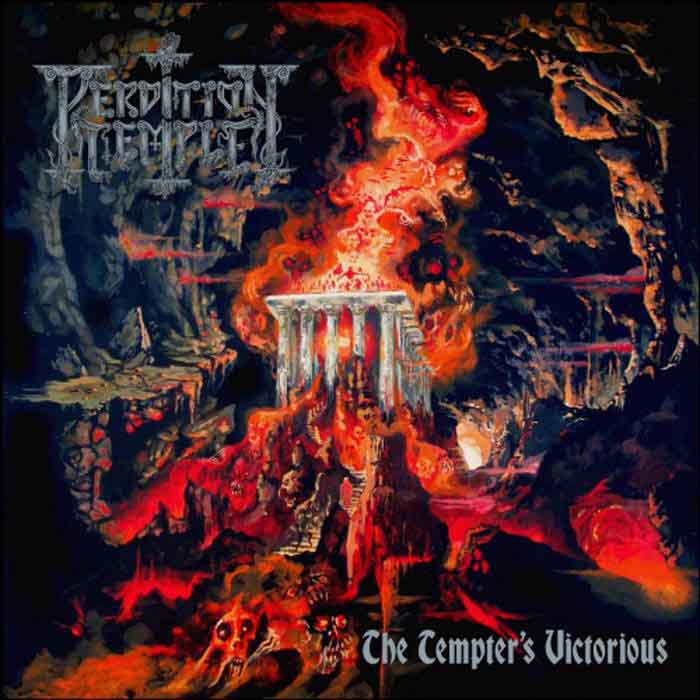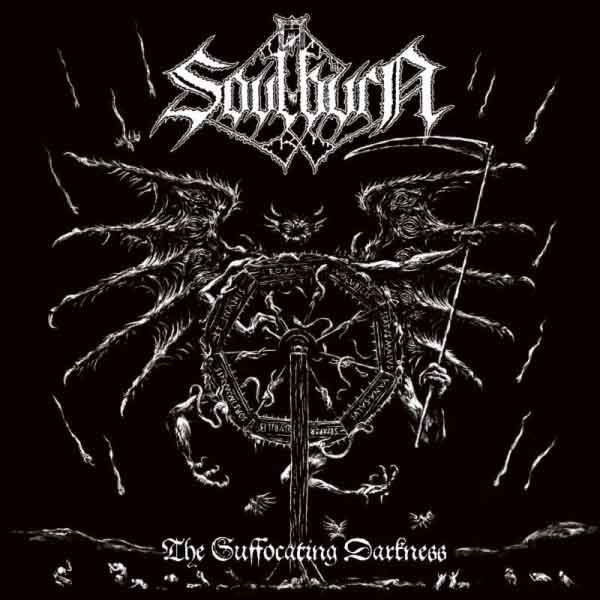The Behistun Inscription of King Darius was carved approximately 2,500 years ago in what is present day Iran. It includes a multilingual narration (the veritable Rosetta Stone of cuneiform) and a relief which depicts the Great King before nine men whose hands are tied and necks roped. These nine doomed men symbolize the leaders who dared challenge Darius I’s power and the inscription narrates how the Great King and his army “utterly smote” all opposition time and again. It is a monument to masculine preeminence, violence, and revenge; elitist and cruel it is typifying of what is great in life: victory. These are timeless aesthetic values which parallel a modern metal ethos and embody its philosophy of power – as Nietzsche once wrote, “The excess of power only is the proof of power.”
Slavoj Žižek writes in his 2008 book ‘Violence’ that most of us are “caught in a kind of ethical illusion”, which is ingrained in our instinctual reactions and that “This is why shooting someone point-blank is for most of us much more repulsive than pressing a button that will kill a thousand people we can not see.” (e.g. Milgram experiment) This is the same evolved psychology as William Blake inquires questioningly about in ‘The Human Abstract’, as Baudelaire’s “unmoved hero” lends counterpoint to in his “Don Juan in Hades”, as Byron attempts to exploit in “The Prisoner of Chillon”. The general innate effect induced reflexively by cognition of some negative state from which either sympathy, empathy, or indifferentism commands our attention. Through this, the deduction or normalization of altruism and pacifism as the commonality can then be contrasted to the induced (or conditioned) opposing hierarchy of predation, hegemony, and misanthropy. Herein we see where a great form of power lies, where the aesthetic values of works like the Behistun Inscription draw their wealth; here we define the base sum from whence the antithetical, or negative, values arise and thus saturate a work of art through mechanisms of visceral response. There is a physical relationship stemming from reality to the values and ideas I am speaking of that is inseparable: our minds.
From an inseparable form in understanding come values, or categorical variables, which define much what draws me to a piece, or genre. These categories tend to revolve around my intuitive response to, or interpretation thereof, distinct drama/ representations characteristic of the grander ideals which germinate visceral responses. From this negative inclination much has been cultivated in the form of artistic tributes, both modern and old, to the glory of death, ruin, victory, and the mental states which are the highest peaks of emotional experience; an impact to psychology like arousal to a sex organ. Because for all the waxing upon the beautiful as an ideal one can happen upon it becomes self evident that that which is ugly, deformed, sickly, unclean, or of choleric temperament, can bring about a much more physical reaction. Watching executions, hearing cries of agony, observing the emaciated, the diseased, the exploited, the broken, the deformed, in even the briefest of glimpses the effect can be very real and intimately innate, as a substance that holds unending possibility for suffering which the light of creative ambition shines upon.
The one I have before me now is Perdition Temple – The Tempter’s Victorious. It is an eight track onslaught of blackened death metal for the modern day exterminationist. There are general themes of mass death, satanism, and morbidity, the sort of abstracted fantastical storytelling common the genre, and though there may be some weakness in the textual substance the incorporation of the ideas is well executed. The sound carries an approach to structure that focuses on an unceasing attack of technical riffing at a tempo evocative of full auto fire backed by vocal and percussive dynamics arranged with the structural integrity of a M1 Abrams. There is a detectable formula to the album as a whole, e.g. a crushing and sometimes chaotic guitar sound matched to blasting drums and Impurath preaching hate, but such is the style and the elitists expectation towards consistency. The musicianship displays high caliber and the black, thrashy, satanic death format feels natural and engaging, as opposed to coming off as contrived.
This album falls far more into the Florida death metal stereotype than one typical of USBM. The music predominantly builds on precise, aggressive, density and a sort of rapid oscillation between heightened tension and resolution that is ever running at full tilt. Considerably inaccessible, or lacking in the common musical expectancies of harmony, contour, etc. The Tempter’s Victorious plays a familiar style that reminds me in many ways of bands such as Angelcorpse, Blasphemic Cruelty, Diabolic, etc., and others whom have shaped their music to be the antithesis of traditional demands from the listener. However, as an educated devotee, this material is appreciated all the more for the respite it provides from the hell of popularist modernity and the industrial scale by which accessibility is mass replicated. Perhaps that is also a commentary on the infuriating nature of refinement, and while it may be true to conclude that Perdition Temple present little in the way of new frontiers and that this may not be the most memorable of albums it is nonetheless a solid product of extreme metal.
Released by Hell’s Headbangers and available for limited free streaming, I’d suggest checking out the title track, “Doomsday Chosen”, “Scythes of the Antichrist”, and “Devil’s Blessed” which should give you a working idea of what you can expect from this band, e.g. heavy usage of palm muting, tremolo picked arpeggios, varied meters, dissonance, endless blast beats, shredding solos etc. Should you be of a similar mindset to myself, you’ll no doubt conclude this is a worthy black/ death release created by established musicians. The strongest aspect of this band is the quality of death metal put forward, e.g. the most important part. I believe what is really lacking is a stronger or more developed voice, vision, or intentionality behind the imagery and topicality of their expressions. The use of black metal themes and attributes does well to fill this void, but when you draw contrast to the strength of the music the actual thematic purpose of the album becomes exceedingly generic. One needs only a cursory reflection on the lyrical content to realize this has an identical failing of many black metal albums inasmuch as the lyrics center around bizarre satanic fantasies, using odd/nonsensical word combinations, and words seemingly chosen merely for dramatic effect. By looking less superficially, one overcomes this short coming, as analyzing the value system producing the content affords one endless range by which to indulge the emotions of hate, violence, and victory.
4 CommentsTags: 2015, blackened death metal, death metal, Florida Death Metal, perdition temple, the tempter's victorious



